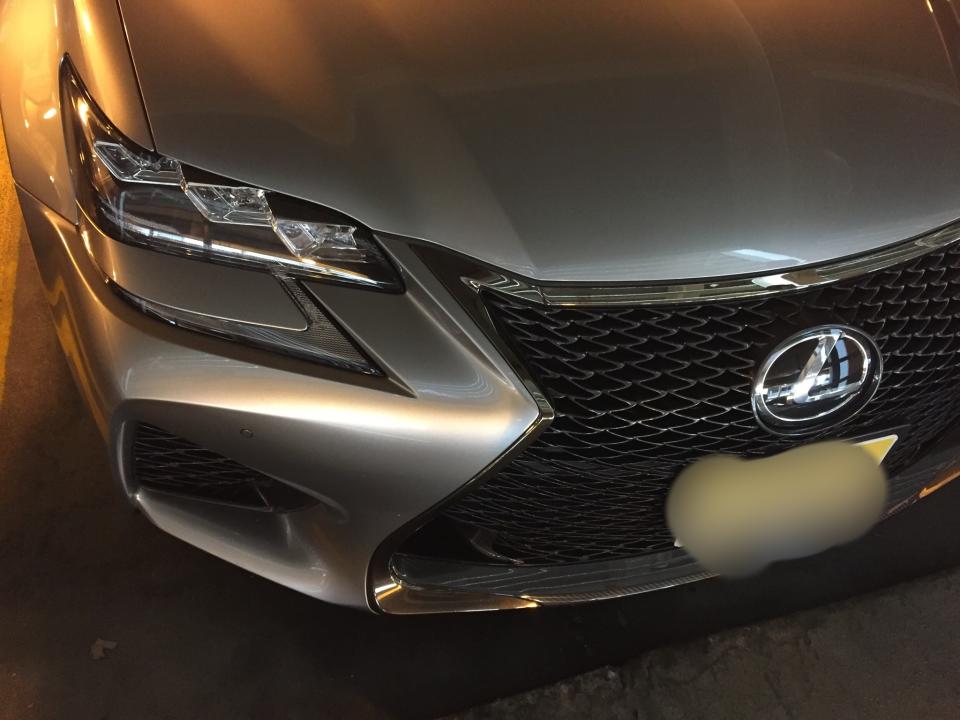The Manual Car Is About More Than Shifting Gears

We need to talk about turn signals.
The other day I got into a fight with a Lexus. The GS F we were test-driving is a sleek piece of $85,000 machinery with a snarling 458-hp engine and all the future tech you'd expect. It ate up the I-95 between New York and D.C. in rapid comfort and joy. Except for one thing.
Our Lexus test car had the kind of smart turn signals that turn themselves off once you change lanes. You know what I mean? While pretty much all cars are smart enough to shut off the blinker after you turn a corner, more modern ones will turn them off after you'd shifted lanes. For the life of me, I could not resist the old habit of flicking the lever back to start once I'd moved over. Muscle memory just got the best of me.
This was the dawn of a highway nightmare. Trying to turn the signal off activates the blinker in the other direction, which makes you so angry you start flailing about to make the car knock it off. Trailing drivers must have seen quite a sight as my blinkers blinked left for a moment, then right, then left again, like some bizarre single-car turn signal rave rolling down I-95.
If you're paying attention to the car world, it's clear why this tech exists. Fancy autos need that wow factor of features to present the feeling of luxury, and I suppose there is some kind of added convenience in not needing to turn your blinker on and off. But that's not all it's about. Like lane change departure warnings and automatic braking when you get too close to the car ahead of you, auto turn signals are part of the tech wave blazing the trail from dumb cars to smarter cars to semi-autonomous cars and finally to fully autonomous cars. Turn on your blinker while Tesla's Autopilot is driving and the car obliges, moving into the next lane over. Soon, the car won't need your command.
Consider this, then, a breif ode to cars that still let you do it yourself.

Not long after testing the Lexus, I was bombing around New York in the Hyundai Elantra Sport, a car that cost four times less than the Lexus but brought just as much joy, if not more. Some of it is nostalgia, sure. Two of the first three cars I ever owned were underpowered stick-shift Ford Escorts, cars that would feel out of place in 2017 for multiple reasons. First because the obsession with tall crossovers is killing the small car. Second, because the manual transmission is one the wane.
The Elantra Sport is one of the few newer cars to offer it. With a six-speed tied into an engine boosted to 201 hp, the little Hyundai has just enough oomph to feel like it's flying around. That raw power output is no match for the Lexus' snarling V8, which, oh boy do you feel when you lay down the gas to merge onto the interstate. But there's that reality that doesn't make it into most car reviews-the raw power at the top end of the torque curve means nothing in real-world driving. Confined by speed limits and traffic, the adrenaline to be unlocked lies in muscle off the line, and shifting through the gears in a little Elantra Sport offers great fun in that.
Stick-shift aficianados love to go on about how rowing through the gears of a manual transimission ties the driver to the car. Because it's true-you are one degree more connected to the machine. That's not the end of it, though. Shifting up and down also ties you into the world around you. Think about riding a bike. Nobody's more in tune with the changing face of a landscape than a cyclist, shifting down to endure the ascent and back up to fly down the hill, all while feeling every bit of rough terrain if the tiny tires find themselves on uneven surface. Shifting your own gears links the driver to geography.
And the Elantra had one other feature to adore: manual turn signals. Ugh, the relief at being able to do it yourself. Just like being responsible for your own gear shifts, having to turn the turn signals off and on makes you mentally aware of the surroundings all the time. Maybe someday the true autonomous car will let us let our guard down and read books while we commute down the freeway. For now, the more aware every single driver is, the better.

What we're really talking about here is the very point of luxury itself. It rounds off the mechanical necessities of operating a big, heavy piece of transportation equipment and makes the unavoidable task of driving a more pleasant and peaceful one. But besides pampering us, high-tech car features are preparing us for what appears to be the inevitable automotive future. The one where cars are good enough to drive for us, and we have to let them because it's not safe for a human to operate an automobile.
Cars like the Elantra, then, are a welcome respite for those of us who actually like to drive, who like the feeling of controlling the machine. Despite the rise of the crossover age, this class of small drivers' cars endures for a reason. There's something to be said for the good, affordable car, and the Elantra Sport starts at barely over $20,000, a rarity in 2017. There's something else to be said for a machine that still lets you do things yourself.
The Elantra Sport is an inferior car, sure, by a factor of $60,000. But it's my kind of car. Small, reasonably powered, down under the layer of the atmosphere that crossovers reach.
You Might Also Like

